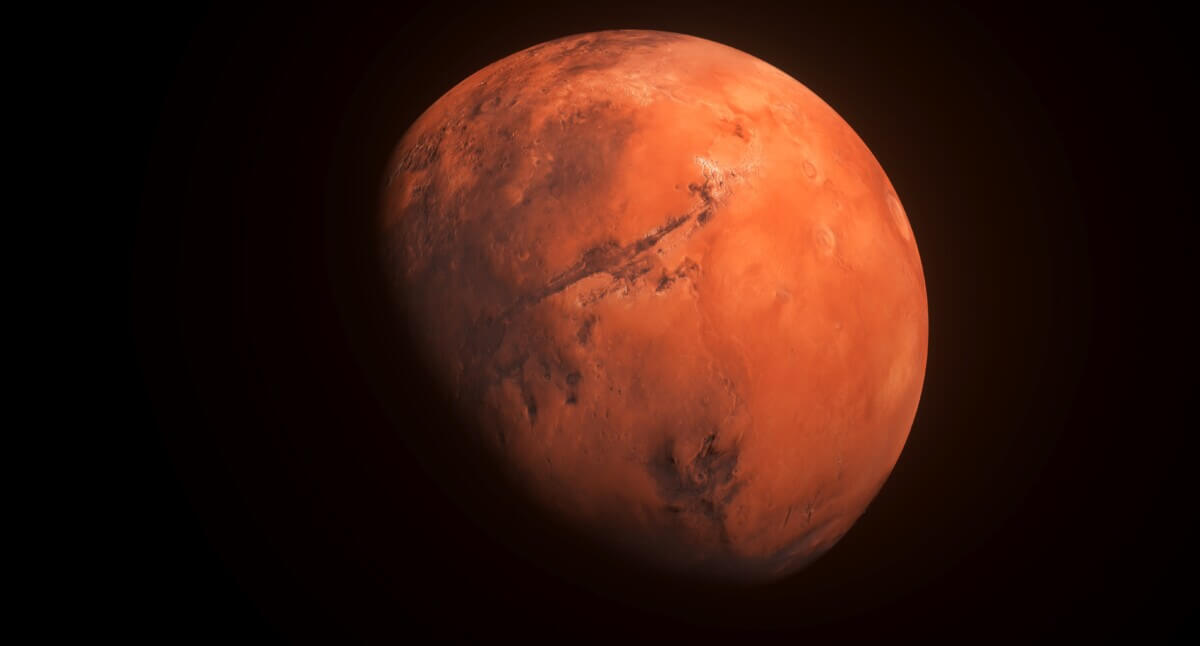
(© IM_VISUALS - stock.adobe.com)
PISCATAWAY, N.J. — When people think about aliens on Mars, some may picture little green men in flying saucers. A new study suggests that, instead of looking up, humans should have been looking “down” for Martian life. Researchers at Rutgers University have pinpointed the likeliest spot scientists believe life may have existed on Mars. They say a region several miles below the surface may have been home to underground riverbeds and thick sheets of melting ice.
The new theory may help scientists finally solve the mystery of the faint sun paradox. This problem has troubled studies about the red planet for years, as scientists couldn't figure out how life could exist on Mars during a period when our sun was not hot enough to support on the fourth planet.
“Even if greenhouse gases like carbon dioxide and water vapor are pumped into the early Martian atmosphere in computer simulations, climate models still struggle to support a long-term warm and wet Mars,” explains lead author Lujendra Ojha in a university release. “I and my co-authors propose that the faint young sun paradox may be reconciled, at least partly, if Mars had high geothermal heat in its past.”
The many mysteries of Mars
The study explains that the sun acts like a giant nuclear fusion reactor. It generates energy and heat by turning hydrogen into helium. Over billions of years, the sun gradually warmed up the surface of planets throughout the solar system. About four billion years ago however, astronomers say the sun was much dimmer so Mars would still have been freezing.
Despite this, the red planet still has signs of ancient riverbeds and chemical traces of water-related minerals which point to abundant supplies of liquid water during this time! How could this be?
The Rutgers study says rocky planets like Earth and Mars have their own heat-producing elements. Substances like uranium, thorium, and potassium create heat through radioactive decay. In this model, water would have been created through the melting of the planet's ice sheets, regardless of how hot the sun is or isn't.
Here on Earth, that process forms subglacial lakes in areas of the West Antarctic ice sheet, Greenland, and Canada. Researchers say it's likely geothermal heat did the same thing on Mars nearly four billion years ago.
Heating things up on the Red Planet
Scientists examined several datasets taken from Mars to prove whether underground heat was possible during this ancient time (the Noachian era). The results reveal the conditions for subsurface melting could be found everywhere on Mars back then. At the right depth below the surface, liquid water would remain even if the planet lost its atmosphere and magnetic field over time.
Researchers therefore conclude that if Martians (of any kind) ever existed on the planet, they would have followed the liquid water deep underground.
“At such depths, life could have been sustained by hydrothermal (heating) activity and rock-water reactions,” Ojha says. “So, the subsurface may represent the longest-lived habitable environment on Mars.”
Pjha adds NASA's InSight spacecraft, which landed on Mars in 2018, may help scientists find more evidence that geothermal heat created a habitable underground in ancient times.
The study appears in the journal Science Advances.










